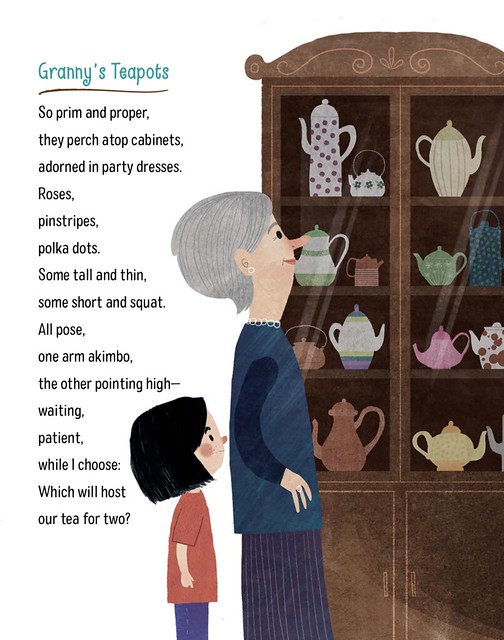My pencil skates gracefully across the page.
Orange rays climb the ladder of the sky.
Cicadas sing a shrill lullaby.
What do these descriptions have in common? They were all created by my students and they all employ personification. Personification is one of my favorite tools. I love using this literary device to engage and delight students, both as a poet and teacher.
What makes personification such a powerful tool?
When writers use personification, they give human behaviors and thoughts to something that is not human, like an object, animal, or idea. In other words, they make the subject act like a person.
Personification is a great way to engage students’ imaginations as they read and write. It requires writers to “step into the shoes” of a subject and consider its perspective. What does the moon think when it looks down on the earth? How does a tree feel when its leaves fall? Not only does this help students think more creatively, but it boosts their emotional sensitivity as they form a connection with the subject.
Personification in Poetry
Poems make great models for personification because they are concise but concentrated. They allow students to dive in without feeling overwhelmed by too much text. And examples of personification abound in poetry. (I’m not the only poet who loves using this powerful tool!)
When I teach personification, I start by sharing my poem “Grannies Teapots” from my book FINDING TREASURE: A COLLECTION OF COLLECTIONS. I explain that the idea for this poem came from my grandmother who collected teapots. As a child, I loved studying the different teapots on her shelf and deciding which one to pick for our tea party. With their different shapes and patterns, the teapots reminded me of ladies in fancy dresses. When I wrote the poem, I decided to personify the teapots in this way. After reading the poem, I invite students to identify some of the words and phrases that make the teapots seem human.
Another great personification mentor poem I love sharing with students is Laura Purdie Salas’s “Lidless Marker’s Lament," from IN THE MIDDLE OF THE NIGHT: POEMS FROM A WIDE-AWAKE HOUSE. (Thank you, Laura, for giving me permission to share your work!) In this clever poem, a marker runs dry because someone fails to replace its lid. After reading this poem, I invite students to imagine other objects or animals that might face a problem based on someone else’s actions. Grass that hasn’t been watered? Dirty dishes left in the sink? We discuss how these objects/animals might react. (IN THE MIDDLE OF THE NIGHT contains many other fabulous personification mentor poems to enjoy!)
I also read the poem “Miss Willow” by Kristine O’Connell George from her book OLD ELM SPEAKS. (Thank you, Kristine, for allowing me to share your wonderful poem!) In this poem the willow tree has a strong personality. I ask students to identify which words show that personality. (Discover even more examples of personification with the rest of the tree poems in OLD ELM SPEAKS.)
Want even more examples of personification in poetry? Check out Dirty Laundry Pile: Poems in Different Voices, edited by Paul B. Janeczko.
Ready, Set… Personify!
After we’ve explored personification through mentor poems, it’s time to put this tool to the test in writing. First, we work on a personification poem together. We choose an object to personify. Something from a student’s desk? From the playground? An object studied in science? The topic possibilities are endless!
We “step into the shoes” of this object and imagine what it would do if it were human. We brainstorm ideas using the PERSONIFICATION POEM PLANNER. (Brainstorming is an important step in the poet’s process!)
Here's an example of a planner we filled out for a sea shell:
Then we use our best ideas to fill out the PERSONIFICATION POEM TEMPLATE. I find templates are a great way to provide a scaffolding for novice writers. Students don’t have to worry about structure and can focus on their ideas. Once students gain confidence, they can create additional personification poems that don’t follow the template.
Here is a personification poem I created with a class of 5th Grade poets:
I float on the ocean’s current
in a fancy pearl dress.
I dance and twirl, feeling free.
Then I land on the shore in a tangle of litter
and I wish I could clear it all away
to rest on clean sand.
I am a seashell.
Finally, I invite students to write their own personification poems, following the same process. First, they brainstorm with the PERSONIFICATION POEM PLANNER and then they craft their poem with the PERSONIFICATION POEM TEMPLATE.
Try writing personification poems with your students. You’ll find their creativity leaps off the page!










I loved reading this. You are now in my favorites file! I will come back often!
ReplyDeleteOh, I am so glad! I hope you find a plethora of poetry lessons to love!
ReplyDelete